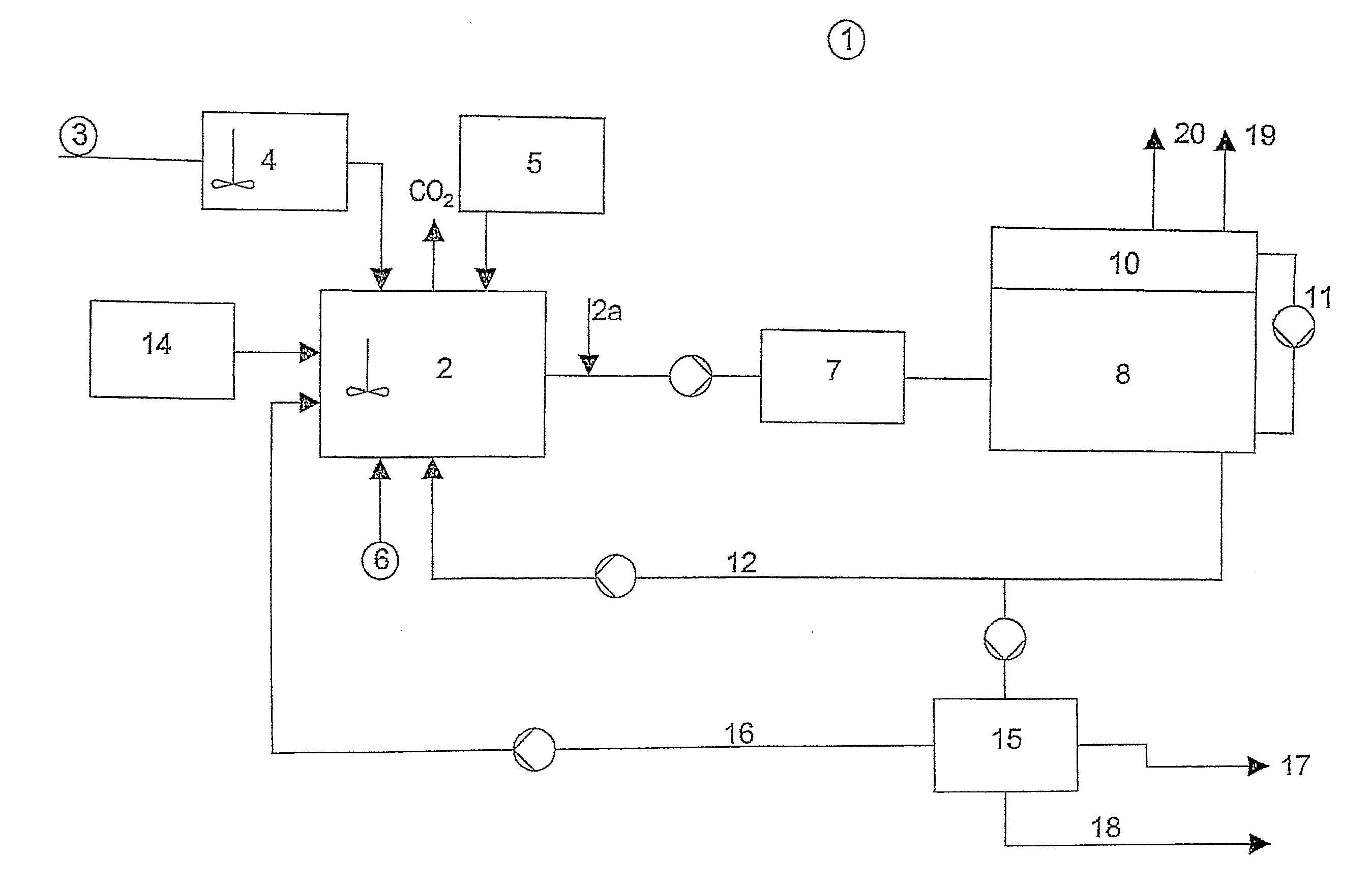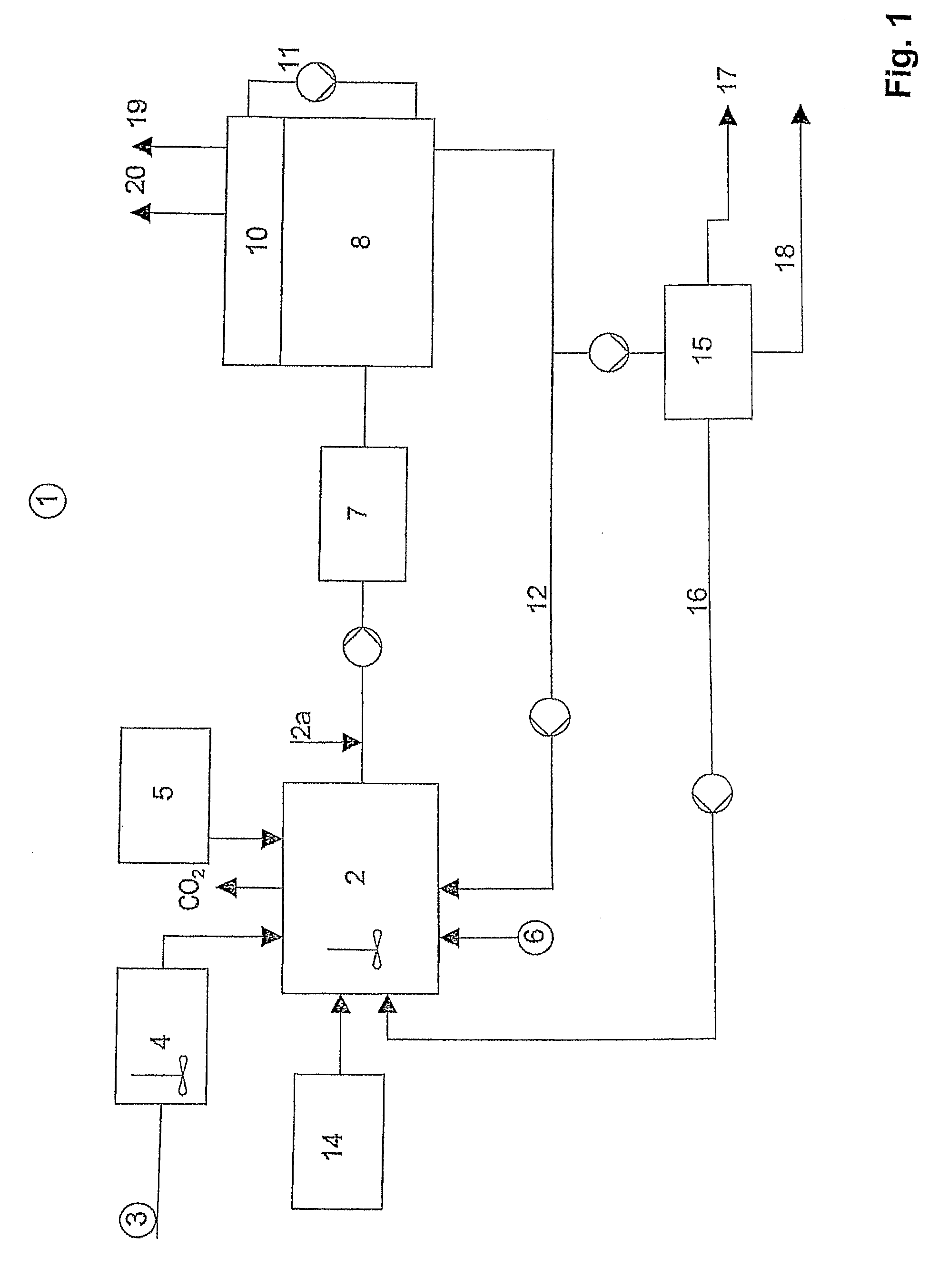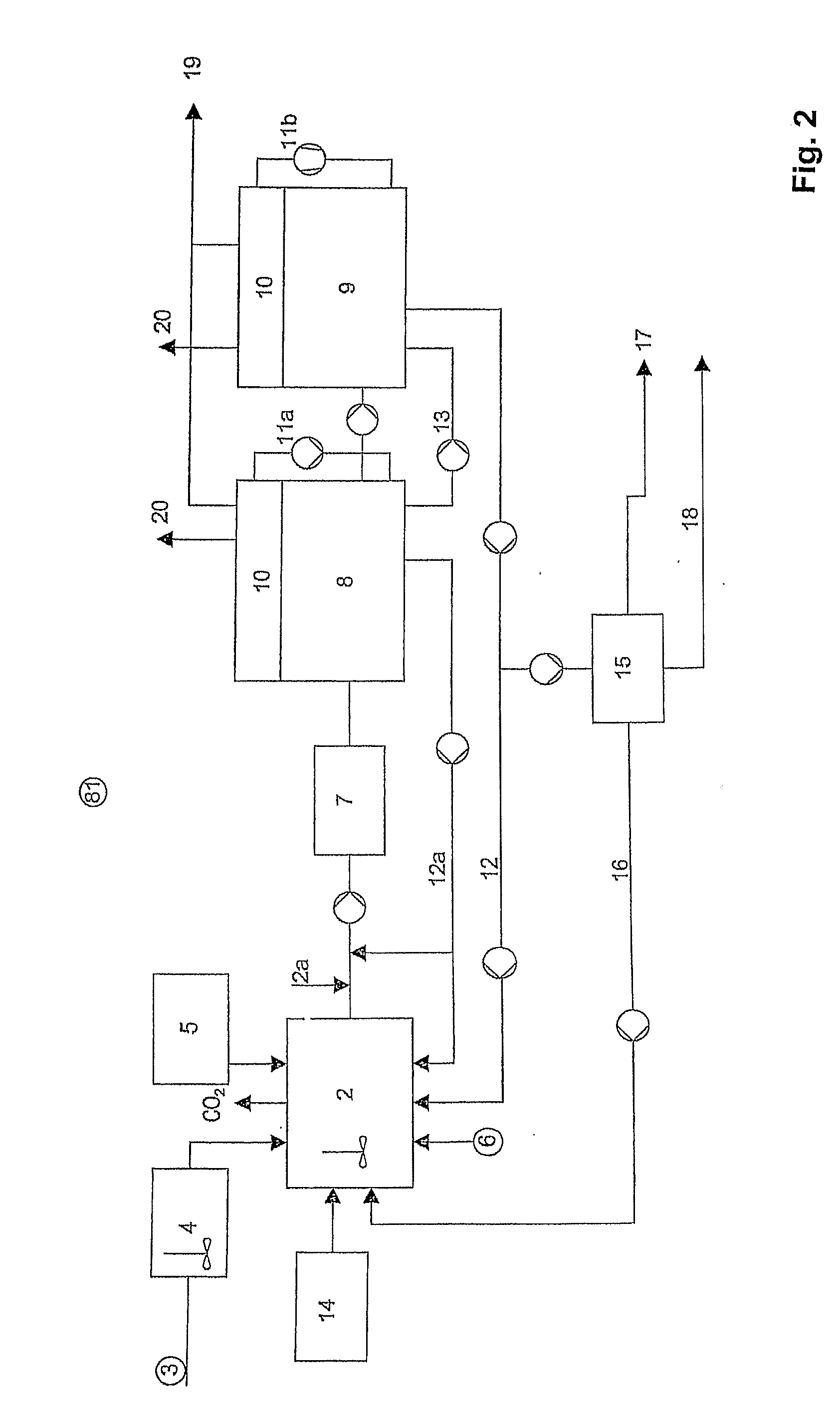Process for producing methane from process water and biogenic material
a technology of applied in the field of process for the production of methane from process water and biogenic material, can solve the problems of inability to sustain for several months, and inability to produce biogas, and achieve the effect of increasing the yield of biogas and easy to lead to explosive mixtures
- Summary
- Abstract
- Description
- Claims
- Application Information
AI Technical Summary
Benefits of technology
Problems solved by technology
Method used
Image
Examples
Embodiment Construction
As shown in FIG. 1, biological material is transferred from a chaff cutter 3 into a conveying system 4. From the conveying system 4, the comminuted biomaterial is transferred to the reaction and mixing tank 2 according to demand. Further, fresh / wash liquor 12—depending on demand—can be supplied to the mixing tank as well as Vinhaca (liquid with organic residue from the ethanol distillation of fermented sugarcane—approx. 3-10% organic materials, and 1% mineral solids, remainder water—about 4-5 wt. % dry materials). Finally, filtration water from the biogas reactor 8 can be led via a return line of 12, 16 into the reaction and mixing tank. With fresh Vinhaca from production, a temperature of up to 95° C. as well as a pH value within the acid range (approx. 4-5.0 pH) prevails in the Vinhaca bunker 5. The wash liquor or washing water has a pH value in strongly alkaline solution, preferably around pH 10-12. In the tank 2, these material flows are mixed with mash and adjusted—preferably a...
PUM
 Login to View More
Login to View More Abstract
Description
Claims
Application Information
 Login to View More
Login to View More - R&D
- Intellectual Property
- Life Sciences
- Materials
- Tech Scout
- Unparalleled Data Quality
- Higher Quality Content
- 60% Fewer Hallucinations
Browse by: Latest US Patents, China's latest patents, Technical Efficacy Thesaurus, Application Domain, Technology Topic, Popular Technical Reports.
© 2025 PatSnap. All rights reserved.Legal|Privacy policy|Modern Slavery Act Transparency Statement|Sitemap|About US| Contact US: help@patsnap.com



